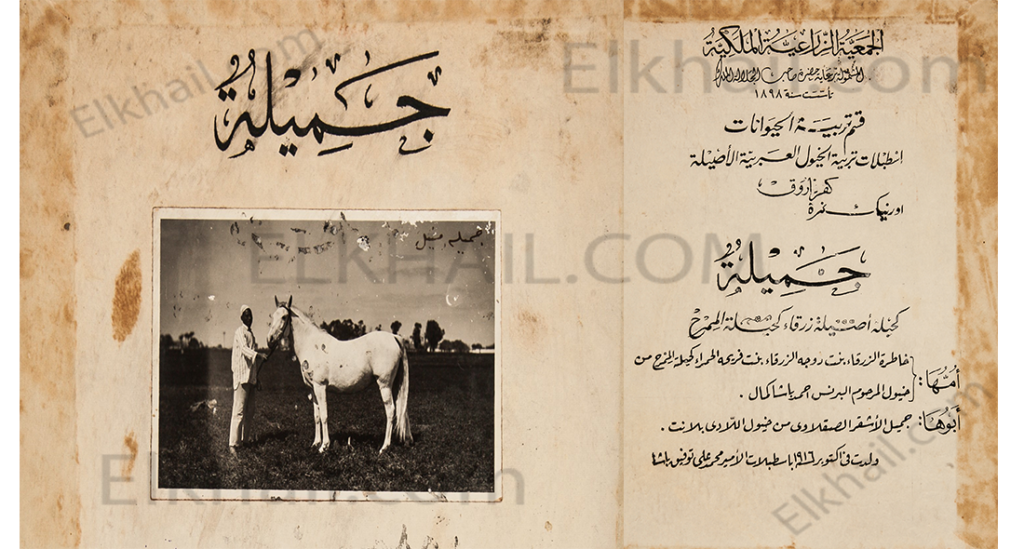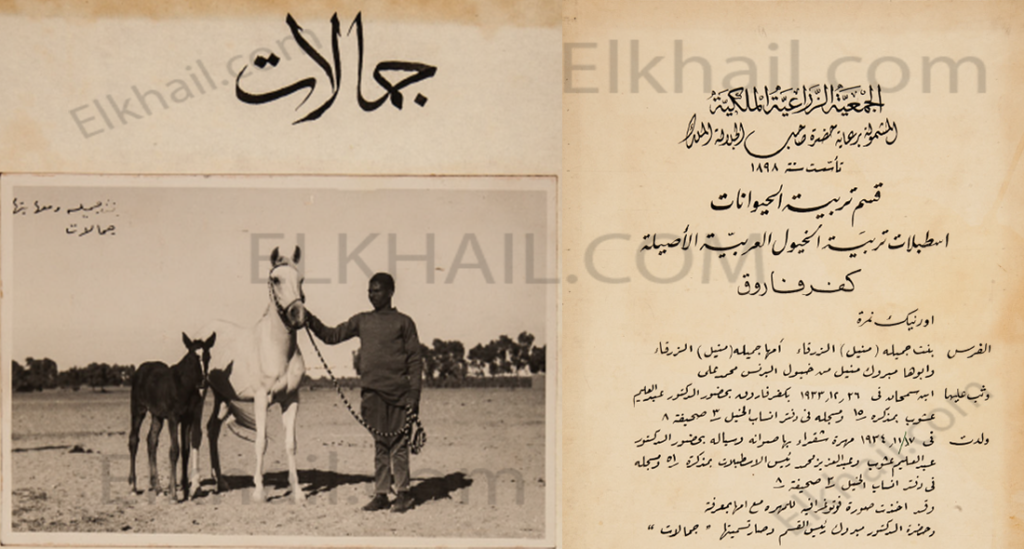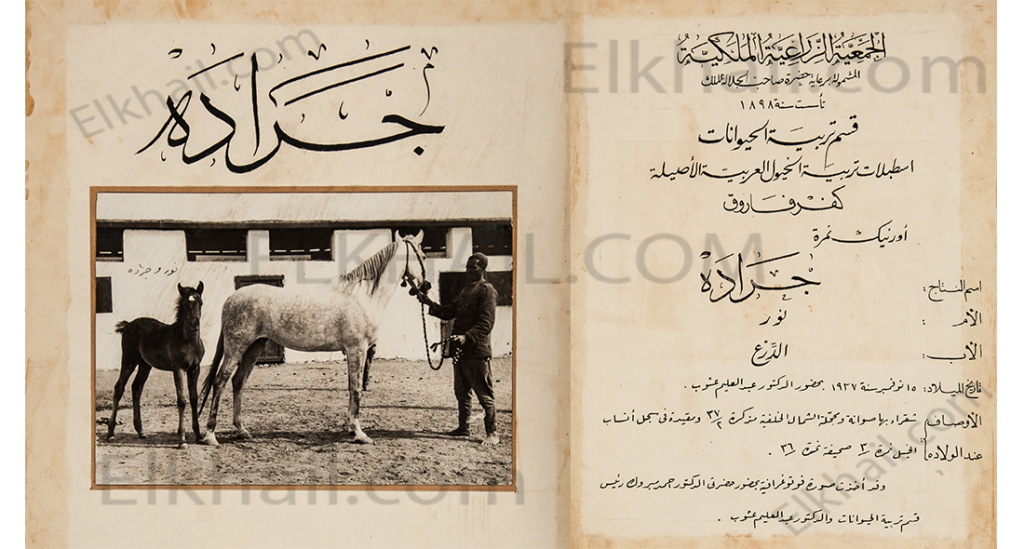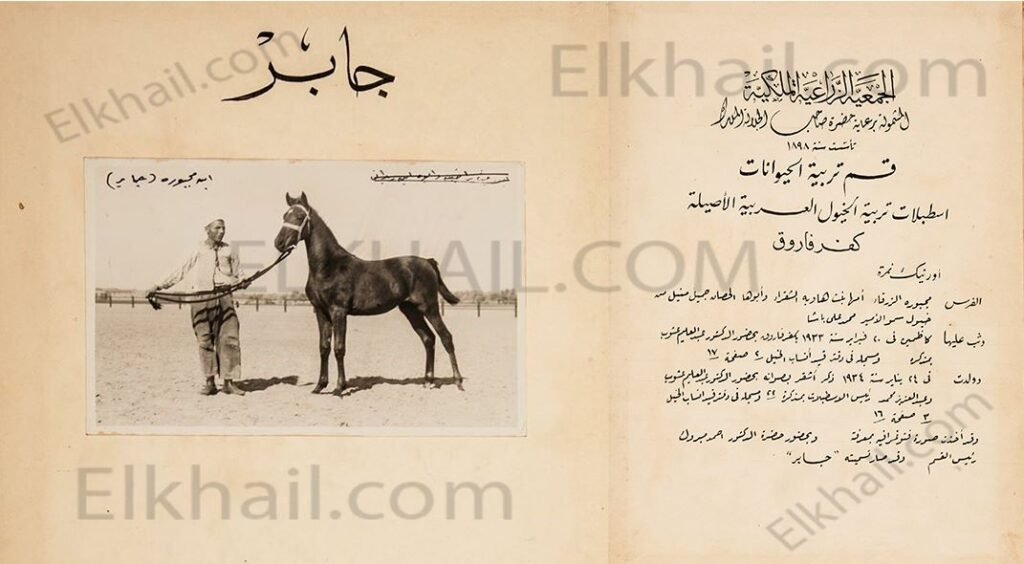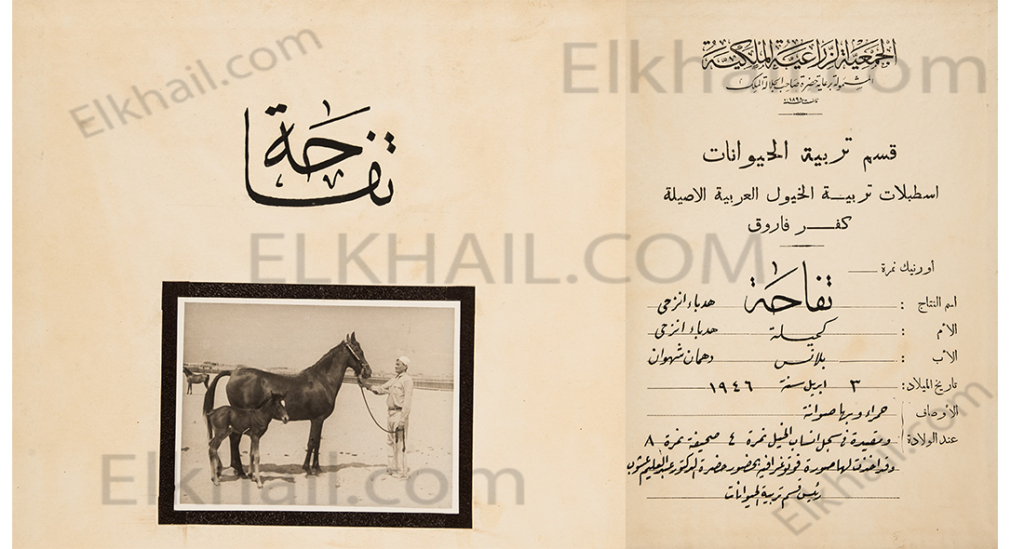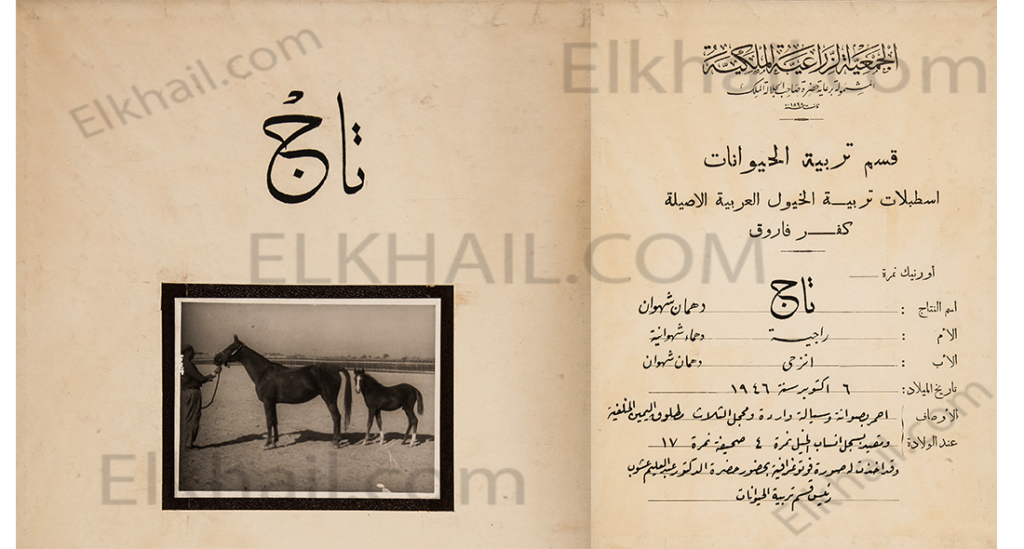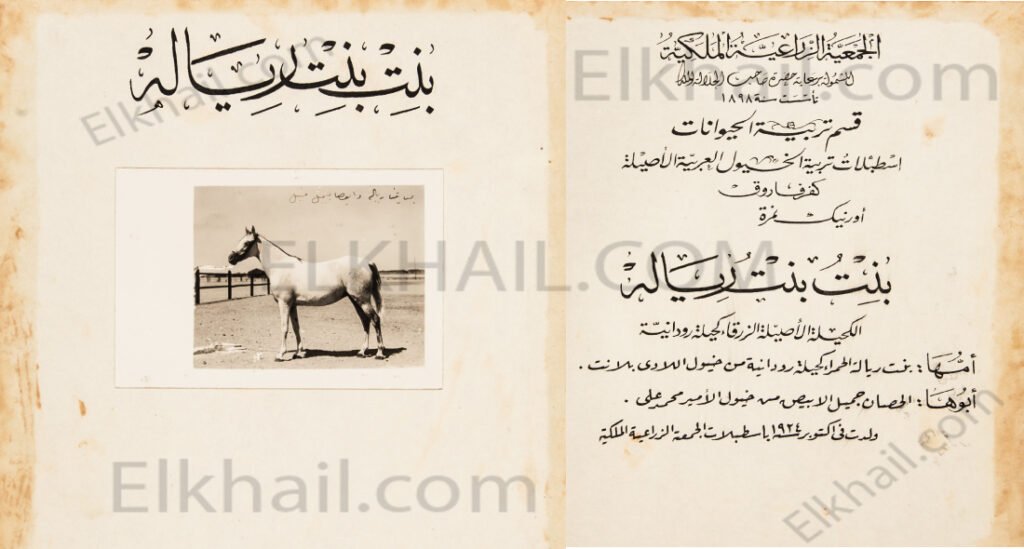The mare, Jamila, was born in October of 1916, from the mother, Khatera Al-Zarqa, who is Kheila Al-Marih, one of the horses of the late Ahmed Pasha Kamal, and the father, Jamil Al-Ashqar Al-Saqlawi, from the horses of Lady Planet. And the descriptions of the mare are beautiful: “Kahila is a blue purebred.”
Author: mohamed saleh
The mare Gamalat was born on November 17, 1934 at Al-Zahraa station for purebred Arabian horses (formerly Kafr Farouk) to the mother Bint Jamila (the daughter of Manial from the horses of Prince Muhammad Ali) Al-Zarqa and the father Ibn Samhan. It has a valve and a fluid. Dr. Abdel Alim Ashoub, head of the education department at the station, attended Gamalat’s birth, and took a photo of her with her mother.
Jaradah was born on November 15, 1937, from mother Nour and father Al-Daraa, and was entered in the horse genealogical register No. 3, No. 36. And the descriptions of “Jarada” are: “a blonde with a flannel and a hinge on the north side.” A photograph was taken of her in the presence of Dr. Abdel-Alim Ashoub, Head of the Education Department at Kafr Farouk Station, and Dr. Ahmed Mabrouk, Head of the Animal Husbandry Department at the Station.
The horse Jaber was born on January 24, 1934, from the mother, Majboura, Al-Zarqa, who is one of the horses of Prince Muhammad Ali Pasha, and the father, Kazemin. A photograph of the horse, Jaber, was taken in the presence of Dr. Ahmed Mabrouk, Head of the Animal Husbandry Department at Kafr Farouk Station.
The mare is Tamadah Saqlawiya Jadari, born on the first of October 1943, from mother Samira and father Khair, and was entered in the horse genealogical register No. 4 No. 7 No. 7. The descriptions of the mare are: “Blonde with a flint and a bob in the north background.” A photograph was taken of it in the presence of Dr. Abdel-Alim Ashoub, Head of the Education Department at Kafr Farouk Station.
The mare “Tifaha” Hadba Inzahi, was born on April 3, 1946, from mother Kahilah, Hadba Inzahi, and father Balance Dahman Shahwan, and her descriptions are: “red with flint”, and she is listed in the horse genealogy register No. 4, No. 8. A photograph was taken of “Tuffaha”, in the presence of Dr. Abdel Alim Ashoub, Head of the Education Department at Kafr Farouk Station.
The horse, “Taj Dahman Shahwan”, was born on October 6, 1946, from the mother, Ragia, who is Dahma Shahwan, and the father, Enzahi Dahman Shahwan. The description of Taj: “Red with Swana, incoming fluid, and Mahjal, the three are divorced, the back right,” and a photograph was taken of him in the presence of Abdel Alim Ashoub, Head of the Education Department at Kafr Farouk Station.
Bint Riyala was born in Kafr Farouk on September 25, 1925. Her mother is the great mare “Bint Rayala”, who at that time, Dr. Branch, director of Bahteem Stables, traveled and bought from Crabbet Stables in England. R “meekness.” The mare Bint Bint Riyala was produced by the great father, the beautiful white horse. This line is one of the important lines. Her daughter, the mare, the queen of the horse, Khair, was famous, and she produced very distinguished horses, such as Mamluk, Samiya and Nazira. These mares produced very important horses, which preserved the name of this family, its…
On the authority of Abu Wahb al-Jashmi – may God be pleased with him – Muhammad bin Muhajir said on the authority of Aqil bin Shabeeb on the authority of Abu Wahb: that the Messenger of God – may God’s prayers and peace be upon him – said: “You must have horses, with every quantity, the most refined of the » . And in another narration: “You must be more deceived with blonde hair, or as long as you are deceived…”. It is a weak hadith, narrated by Abu Dawood and al-Nasa’i. Al-Kumait is between black and red, Al-Akher: the…
Abdullah bin Omar, may God be pleased with them both, narrated – “The Messenger of God raced among horses, and preferred ulcers in the end.” Narrated by Abu Dawood, and its chain of transmission is correct. And ulcers: the plural of Qarih, and the teeth of horses: in the first year around me, then a trunk, then a bend, then a quarter, then a Qarih. The hadith indicates that five-year-old horses have a racing distance farther than younger horses; In order to equal opportunities between them.




